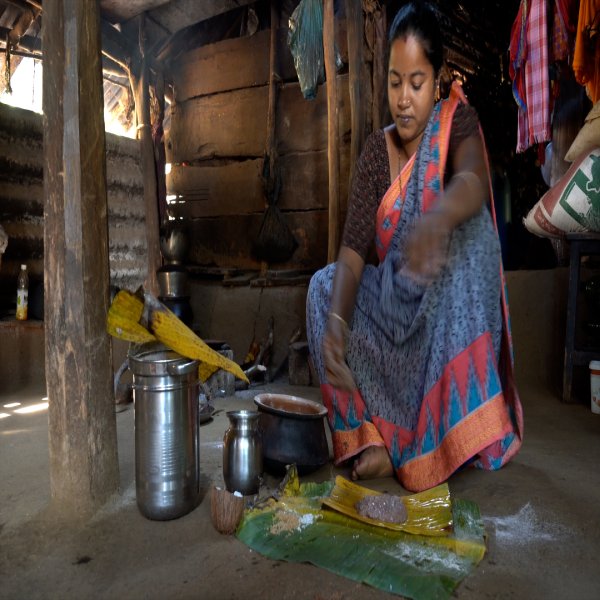
Themes
tribal cuisines
Nutritional benefits of gonya bhakri, goa
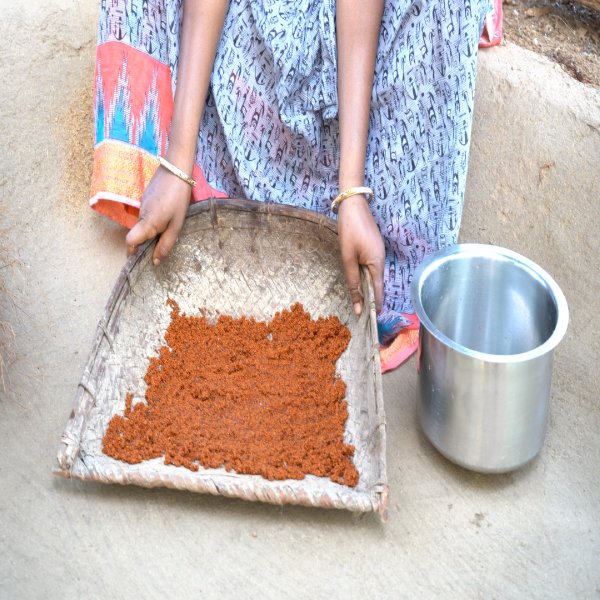
Ragi, or finger millet, forms the backbone of gonya bhakri, for its rich nutritional profile. It is a prime protein, calcium, and iron source to strengthen bones and fight anemia. The high dietary fiber content helps with digestion and manages diabetes due to its low glycemic index that steadies blood sugar levels. The grain is gluten-free and thus well suited for them. Antioxidants and b-vitamins work on skin health and enhance the vitality of hair. Ragi also supports heart health with lower cholesterol levels. The fact that it has slow-releasing carbohydrates makes it a good energy provider that helps manage weight. All these health benefits make it a superfood that serves both the traditional and modern diet in nutritional wealth and cultural heritage.
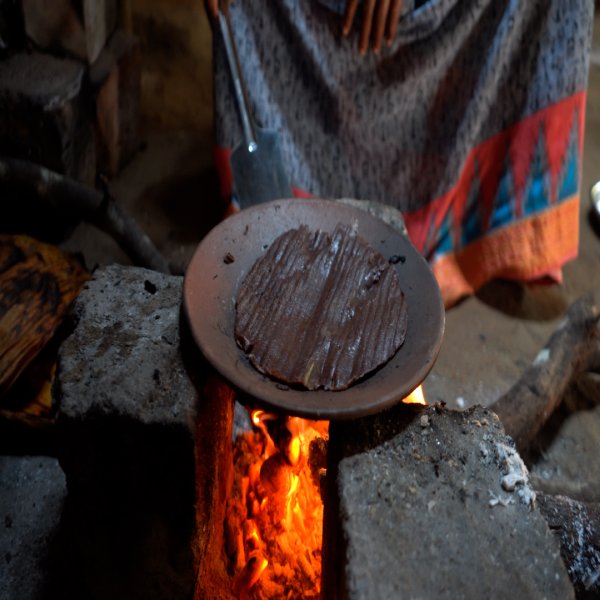
Gonya Bhakri, a traditional tribal snack made from ragi (finger millet), locally called 'gonyo', is unmatched in its nutritional value and cultural significance. These bhakris are not just a treat but a part of the traditional tribal culture. The baking process is special in its use of either chanyachi panna (parasol leaves) or kelichi panna (banana leaves), an application that keeps ancestral traditions alive. Traditionally, gonya bhakri is an offering during festivals and eaten regularly to build bonds of community and cultural identity. This culinary item acts as a double remedy with its deliciousness and health, being rich in calcium and iron and high in fibre. From being grown and processed in a sustainable way, these bhakris are the image of resilience of tribal agricultural practices. Handed down from forefather to offspring in their preparation, the gonya bhakri is a culinary icon of tribal ideology and its symbiosis with nature.
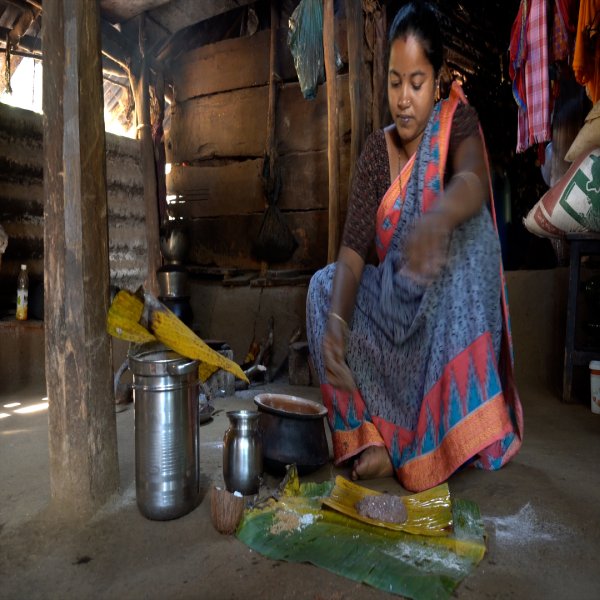
Preparation of gonya bhakri starts with the cleaning and grinding of ragi grains to make fine flour. Grated coconut, jaggery, and cooked rice are mixed with the flour. The mixture is kneaded to obtain smooth dough, taking care to maintain consistency. The banana leaves that are washed and roasted lightly are then set aside for cooking. The dough is divided into sections and flattened on the banana leaves, creating a layer. Another leaf is placed over it, thus sandwiching the dough. This is an age-old practice where leaves are used for shaping and imparting the mild aroma. The layered dough is cooked on moderate heat on a preheated pan. Flipping it regularly allows for even cooking, resulting in a crispy and golden bhakri. On completion, the banana leaves are gently peeled off, and bhakri is served, piping hot.
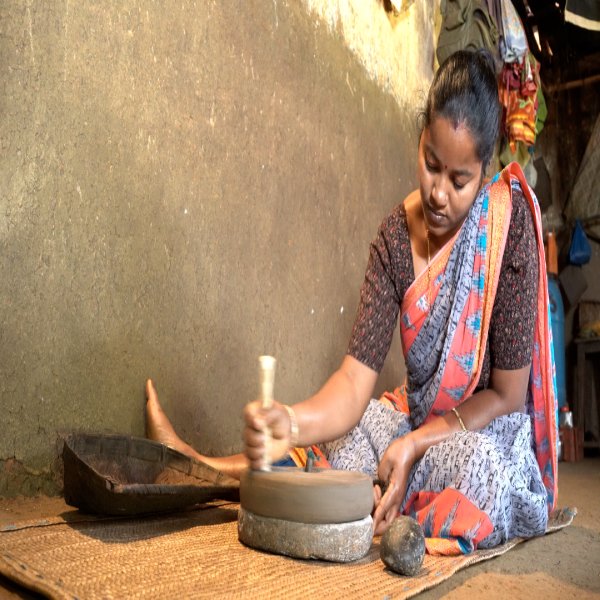
Gonya Bhakri as a traditional preparation is revered for its various cultural contexts in the tribal communities. A morning or an evening light meal usually accompanied by tea, it is also offered with one or the other side preparation, especially a fish curry or chutney. This traditional millet or grain preparation has come to symbolize simplicity, sustainability, and self-sufficiency when prepared without jaggery. The dish is thus a part of daily life, whereas the other ebbs and flows during festivals and community occasions. Gonya bhakri is prepared with meticulous attention to detail and shared among families on these occasions, sealing the concepts of togetherness and cultural conservation. Emanating from traditional farming practices, the dish holds a mirror to the community's relationship to the land and its seasonal rhythms, sealing its place in the community's cultural Identity.
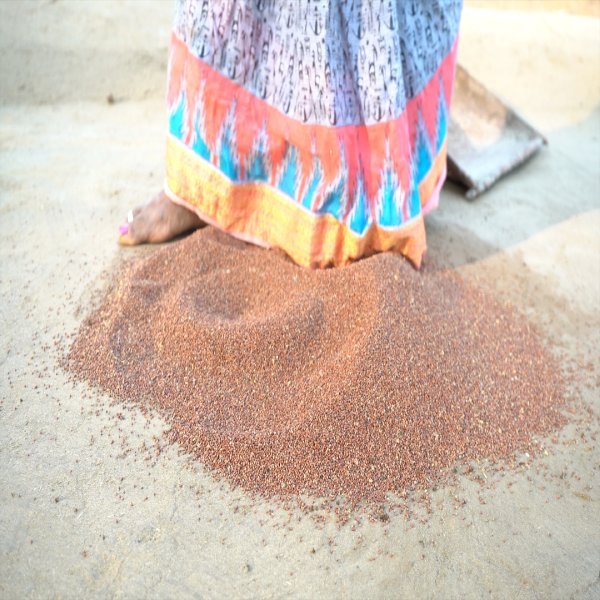
Simple yet wholesome ingredients define the very essence of a sustainable and natural way of living. The core ingredient is ragi flour (finger millet), known for its high calcium content, rich iron, and fibre. This has earned ragi the title of the superfood. The next ingredient is cooked rice (ukde sheeth) that brings softness and binds the dough, giving texture to bhakri. Grated coconut (naalh) adds moisture and a touch of sweetness; the jaggery (godd) adds its sweetness and provides essential minerals. Salt (mit) balances the flavors, and banana leaves (kelichi panna) play a dual role, acting as natural wrappers and flavor enhancers while being cooked. These locally sourced ingredients do not just make gonya bhakri a wholesome dish per se; they also speak of the traditional culinary practices of the tribal communities of Goa.

